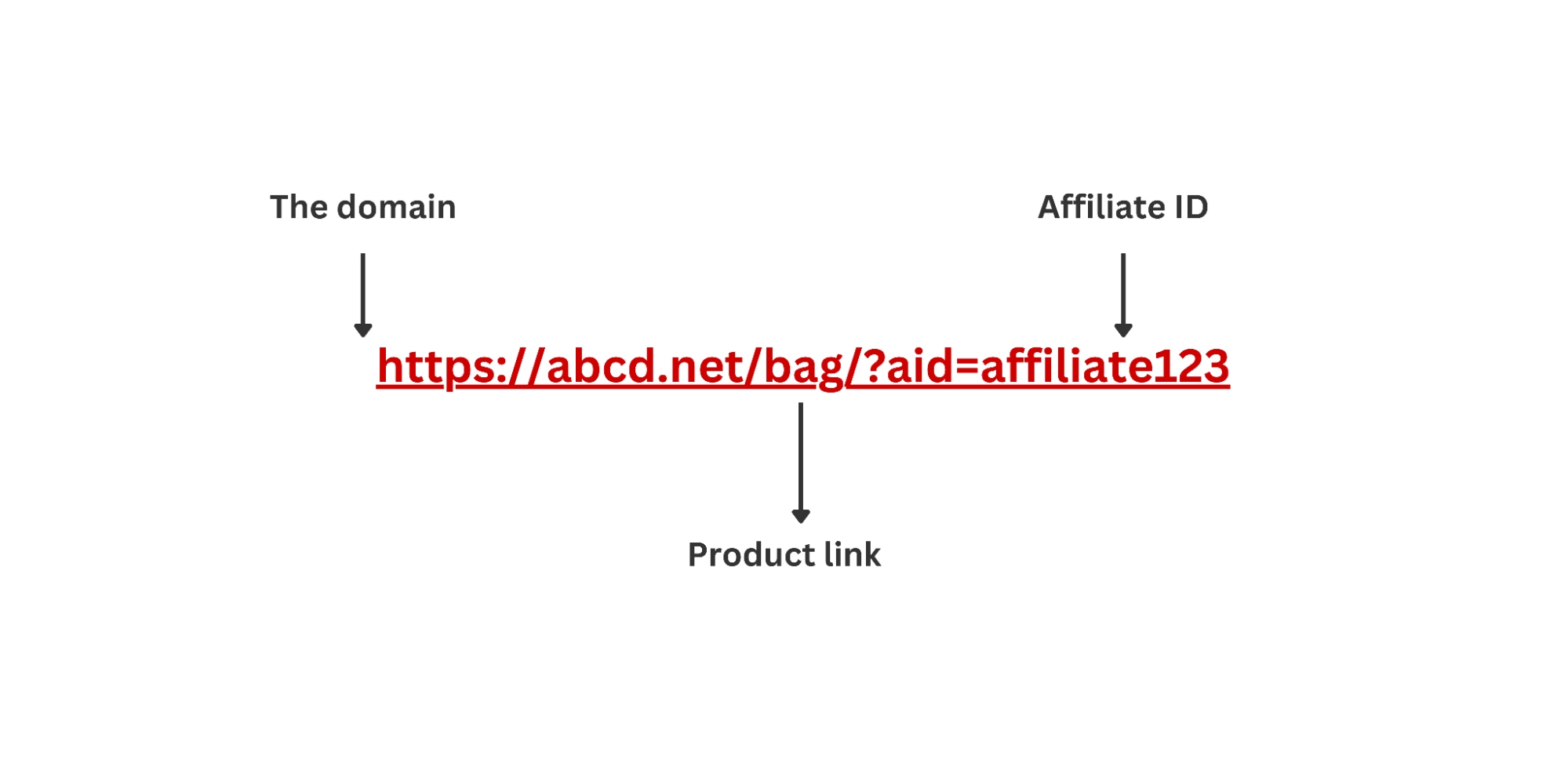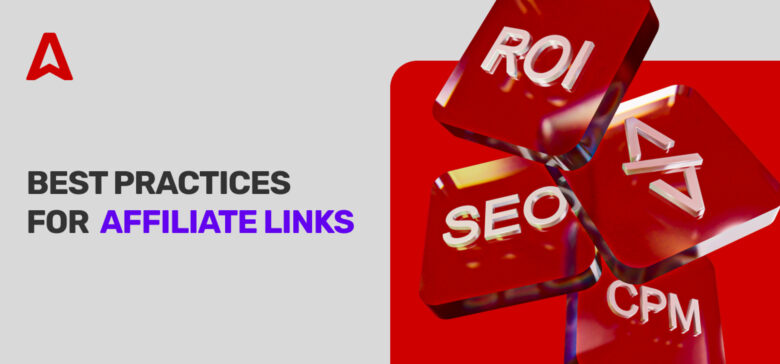Affiliate links are special links that let publishers earn money for promoting products. The publisher collects a commission when someone clicks on an affiliate link and takes the suggested action, e.g., buying a product. This article will dive into affiliate links and their working principles, teaching you how they work and how to use them effectively.
What is an affiliate link?
An affiliate link is a unique URL assigned to a publisher to promote a product. The link contains the publisher’s ID, allowing the publisher to be recognized for sending traffic to the product page. If someone visits the product page and buys the product or takes any other required action, the publisher will collect a commission.
Affiliate links are an effective way for publishers to monetize their websites. You can recommend relevant products to your audience and make money when they buy them, a win-win situation for both sides.
However, affiliate links have an excellent alternative, a multi-offer Direct Link. This alternative automatically adds relevant ad links across your website’s text, directing your reader to a landing page determined by a smart algorithm. This algorithm selects high-paying relevant ads for your audience, improving conversions and empowering you to earn more money.
Adsterra unlocks access to 15,000+ reputable advertisers and creative ad formats, including Direct Links. Join our network of publishers earning $87 million+ annually and counting.
The structure of an affiliate link
An affiliate link contains the product’s destination URL and a unique ID or username for the publisher. This ID identifies the publisher promoting the product, and any traffic it generates is registered. When someone follows that unique ID and purchases the product, a commission is granted to the ID owner.

How do affiliate links work?
Publishers can apply to any affiliate program. If accepted into the program, you’ll receive affiliate links for various products or services. The network assigns you a unique ID, which will be added to all affiliate links.
You’ll create relevant content to promote the products, inserting affiliate links in different sections of your website. Then, you get paid whenever a reader clicks on the link and takes the suggested action, e.g., buying an item or signing up for an app.
The ID tracks all traffic you generate and records the number of conversions. Then, you’ll be paid for these conversions at the end of an agreed-upon period, e.g., weekly or monthly. Payment can vary depending on the network and niche. It could be a commission for each sale, a flat rate for every signup, a flat rate for every sale, etc.
How to get an affiliate link?
To get an affiliate link, a publisher must first sign up for a third-party affiliate program. Many affiliate programs exist across various niches, and they have different requirements. You can sign up for any suitable one, provided you meet the requirements, e.g., minimum traffic levels and audience location.
Any platform you sign up on will generate affiliate links on your behalf. You can then paste these links on your website to draw clicks and conversions.
You can purchase traffic for your website via Adsterra, which you’ll then monetize using affiliate links from external sources. With 35,000+ publishers across various niches, Adsterra gives you ample opportunity to connect with the right audience and grow your website traffic.
How to use affiliate links?
1. Add anchors to your links
Affiliate links should not be placed in their raw format. Instead, they should be attached to specific anchor text to make them look better. Take the below links for example:
Which affiliate link looks better? It’s the second one. Both links are the same, but the second has a contextual anchor that makes it look appealing. It’s neat and user-friendly, which increases the likelihood of someone clicking on it. The key is using anchor text related to the product or service being promoted; this way, your readers know what to expect by clicking on the affiliate link.
2. Balance your link density
Avoid inserting too many affiliate links into a single web page. Too many links can annoy users, and search engines often consider sites with too many affiliate links as spam. One link per 500 words or above is a healthy density.
3. Add Nofollow attributes
Add a rel=”nofollow” attribute to all affiliate links on your website. This attribute tells search engines to ignore these links so your rankings won’t be affected. Adding the rel=”nofollow” attribute reduces the risks of Google and other search engines penalizing your site because of affiliate links.
4. Disclose your affiliate promotion
It’s good practice to disclose your affiliate promotion activities to your audience. You can add a disclaimer informing your audience that third-party companies compensate you for promoting their products and that your site is monetized with affiliate links for such products.
A disclosure makes readers aware of any potential conflict of interest they aren’t comfortable with. Besides, many jurisdictions legally require affiliate disclosures and can impose significant fines on violators.
5. Relevance
An affiliate link should only be placed in relevant content. For example, it’s futile for a fashion blog to post affiliate links for gaming consoles. Instead, the fashion blog should focus on affiliate links for clothing, jewelry, and accessories. There should always be a close match between your content and affiliate links.
It’s also advisable not to place too many affiliate links on a single page because it might annoy users. Instead, you can use Adsterra’s Direct Link to get a whole set of relevant offers from a single link.
Affiliate link examples
Affiliate links can come in different forms, including:
- Text links: You can attach an affiliate link to a word or phrase. Anyone who clicks on the link gets directed to the advertised product’s page.
- Buttons: You can place a button on your site and attach an affiliate link to it. The call-to-action button should be short.
- Email links: You can insert affiliate links in emails you send subscribers. You’ll get paid when people click these links and take the suggested action.
- Image link: You can add an affiliate link to an image on your website. For example, a fashion blog can add pictures of clothing items and attach affiliate links to each one, earning commissions when readers purchase these items.
- Social media links: You can add affiliate links to social media posts and earn money when your followers interact with these links.
Conclusion
Affiliate links can be lucrative if you play your cards right. The key is promoting relevant products that your audience is interested in. We’ve explained affiliate links, their structure, how they work, and their best practices. Publishers can follow these tips to monetize their websites and earn significant income.
Affiliate monetization is futile without website traffic. The more eyeballs on your website, the greater your chances of making money. Adsterra provides a platform to boost your website traffic. Our platform lets you buy high-quality traffic from relevant niche publishers, giving you the perfect audience you can monetize.
FAQs
Yes, you can have multiple affiliate links on a single web page. However, it’s advisable not to place too many links near each other; this can irritate readers and cause search engines to penalize your site. 1 link per 500 words (or upwards) is a healthy density.
However, instead of having too many affiliate links on your site and potentially annoying users, you can use a single Adsterra Direct Link to promote multiple offers to your audience.
There’s no fixed amount publishers can make per affiliate link. It depends on their niche, affiliate network, and the product being promoted. However, the good news is that you can earn a sizeable income from affiliate links. Some websites are monetized only with affiliate links, bringing lucrative profits for their owners. Here is a case study of a content creator who earned $100 weekly via Adsterra Direct Links.
The first step is joining a suitable affiliate program. After signing up for the affiliate program, you’ll be given links (with unique IDs and parameters) to place on your website. You’ll earn commissions or flat fees when people click on these links and take the suggested action.
Yes, you can join most affiliate programs without paying a dime. The key is promoting your affiliate links in the right spots, which will generate conversions. Always promote relevant products and services to your audience to increase the chances of getting conversions.
